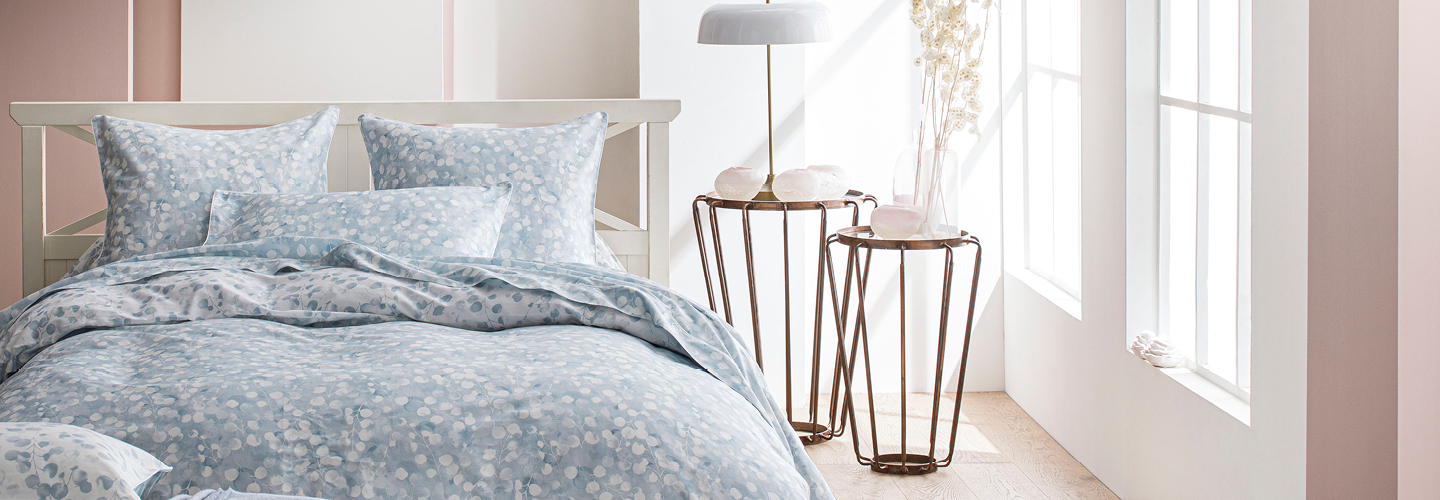In order to ensure the colors of your bedding do not fade over time, choose high-quality items that are easy to clean and maintain. In addition to aerating your duvet cover daily, remember to regularly change your sheets.
First use:
Always wash your bedding before using it for the first time, regardless of its material. New linen is of course very clean, but should still be washed before use. Washing removes dust, freshens, and loosens the fabric. It also provides a fresh and pleasant laundry scent that optimizes your sleeping experience.
We recommend washing new linen on a cold setting (86°F maximum), without detergent.
Regular washing:
Tips to heed for all materials:
Follow the instructions on the care label.
Wash items inside-out and use a liquid detergent (special color-protecting detergent or white detergent for white linen). At low temperatures, powder detergents do not dissolve fully and can leave white marks on bedding
Wash the pieces of a set together to ensure they all look the same after multiple washes.
Separate whites from colored items. Feel free to use a color catcher wipe if an item is both white and colored.
Use a detergent with optical brighteners to brighten up white linen.
Specific tips: Percale and sateen
Bedding is usually washed at 140°F. However, we recommend washing at a maximum of 104°F (cotton setting) to preserve the quality of your linen.
If possible, iron your linen while it is still slightly damp. This will make ironing easier.
Line drying is better than tumble drying. In fact, tumble drying can damage your linen
Bright colors stay vibrant longer when dried in the shade, as direct sunlight can cause linen to fade. As a result, turn your (colored) linen inside-out before hanging it on the line.
Our percale bedding benefits from an Easy Care treatment, which means a quick ironing is sufficient.
If your linen is embroidered, iron it inside-out.
Ironing:
Regardless of the material of your bedding, try to iron it while it's still slightly damp: this will make ironing easier. If your linen is embroidered, iron it inside-out. Please note that most of our products are treated with Easy Care, which protects your linen from creasing and makes it easier (or even eliminates the need) to iron.
Did you know?
Washing with a spoonful of baking soda or sodium percarbonate brings whites back to life!
Certain face creams/treatments can discolor bedding. Remember to protect your pillowcase if you are undergoing such a treatment.
Never hang white linen outside during a full moon...
Feel free to use a pillow mister or add a few drops of essential oils to your humidifier to freshen your bedding


